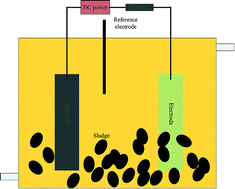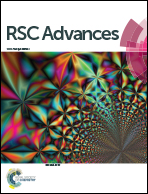Optimization of a bioelectrochemical system for 2,4-dichloronitrobenzene transformation using response surface methodology
Abstract
In the present study, a bioelectrochemical system (BES) was developed for 2,4-dichloronitrobenzene (DClNB) transformation. Response surface methodology (RSM) was applied to optimize the operational conditions, including the V/S ratio (volume of the BES/size of the electrode ratio), interval (D) (distance between the anode and cathode) and position (P) (proportion of the electrodes immerged in the sludge). The optimum conditions for the V/S ratio, interval and position were 40, 2.31 cm and 0.42. The pollutant removal rate and increase in Cl− were 1.819 ± 0.037 mg L−1 h−1 and 11.894 ± 0.180 mg L−1, which were close to the predicted values (1.908 mg L−1 h−1 and 12.485 mg L−1). A continuous experiment indicated that the pollutant removal efficiency in the BES with 50% of the electrodes immerged in the sludge was 34.6% and 22.6% higher than that in the ones with 0 and 100% of the electrodes immerged in the sludge.



 Please wait while we load your content...
Please wait while we load your content...